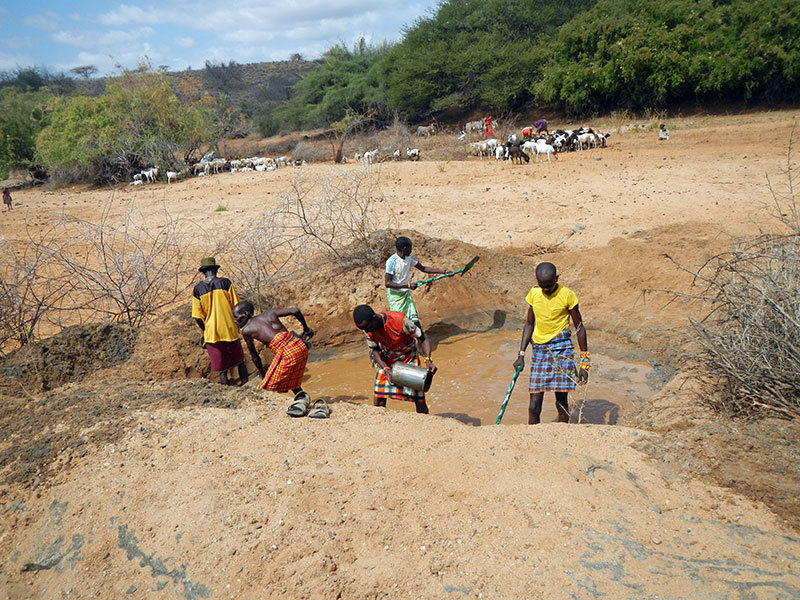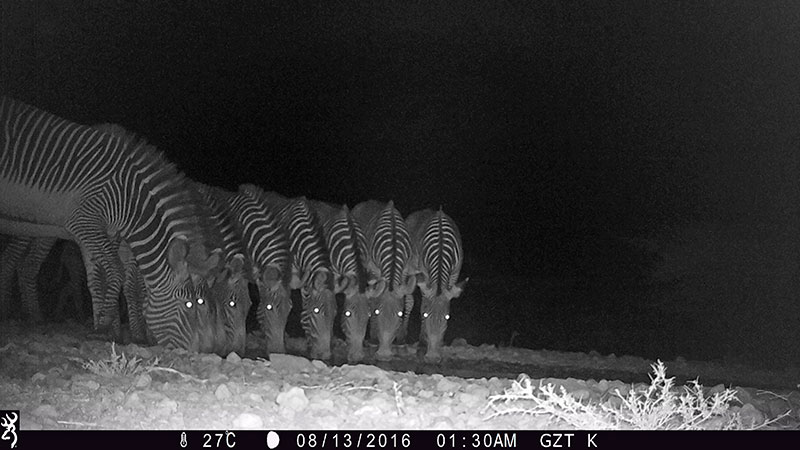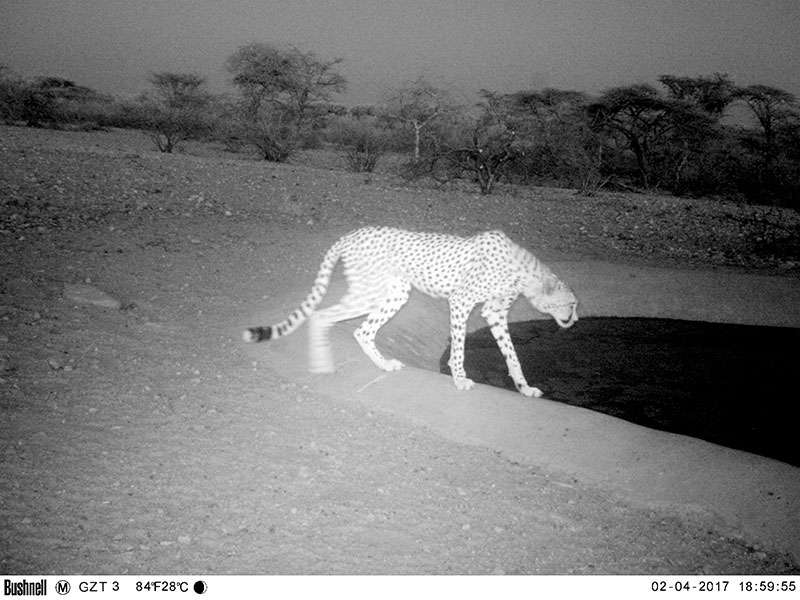© Andrew Peacock
Despite this incredible evolutionary skill, one of the main threats to Grevy’s zebra is limited access to water. Their range in Northern Kenya falls in arid to semi-arid habitat with limited permanent water sources. People and livestock also share these same resources and during times of environmental stress, such as droughts, the pressure on the available water increases.
We therefore manage dry season water access to alleviate the stress on Grevy’s zebra, and ensure they have access throughout the dry seasons of July to October and January to March. This intervention significantly improves the chances of survival for Grevy’s zebra populations in areas where they are particularly vulnerable during the dry season, and helps other wildlife in the same areas.
We manage water access in two main ways:
- Construction of dedicated wildlife water points
- Digging wells in dry season river beds for exclusive wildlife use
We engage Water Monitors from the local community to manage these water points on a daily basis.
Grevy’s zebra drink mostly at night in community areas because water is occupied throughout the day by people and livestock. Although most of our managed water sources are not used by people during the day, they are still located within close proximity to water points that are used by people and livestock because of the limited distribution of water. Grevy’s zebra and other wildlife therefore avoid these areas until people and livestock have dispersed.
We monitor Grevy’s zebra coming to the managed water points using camera traps. Our aim is to capture the stripe patterns of the Grevy’s zebra while drinking to enable us to use stripe-identification methods to monitor the population. We are also able to monitor the presence of other wildlife in the region giving us valuable information on the region’s biodiversity.



